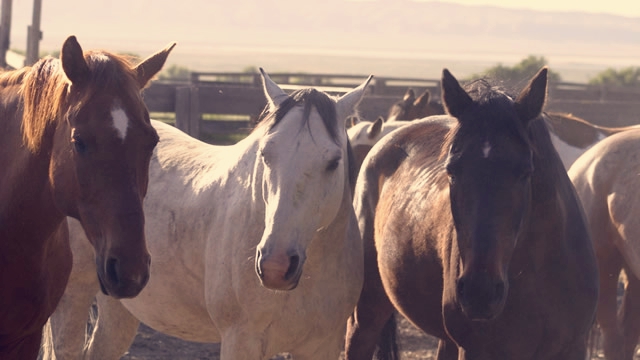Written by Martin Black This article originally appeared in Eclectic Horseman Issue No.52
This time of year, when a person starts riding a horse that has been laid off for the winter—or at any other time—and may have prospered, it might be a good idea to check the horse mentally to see if horse and rider are on the same wavelength.
It’s easy for the rider to get in trouble if the horse is feeling good or is just cold backed. An exercise to help burn up excess energy and get your horse to listen to you, and you to listen to your horse could be very helpful. If you have ever been bucked off or otherwise hurt by a fresh horse, you may appreciate this idea. In a round pen or a square pen, saddle your horse and let him move around at any pace at which you and he are comfortable. If he feels frisky, just let him burn off energy for a while and when he starts to let down, try this exercise. What you are looking for is smooth transitions between the stop, walk, jog, extended trot, lope, turn and change of directions. The more time the horse takes in preparing for the transitions and the more feel you get working between the two of you, the better luck you will have once on board. If the horse is tight and hurrying to get away from you, or if he is operating in an escape mode, you may need to pull your hat down before you step on. One way I like to check this out is to get the horse to turn away from you. If he is unsure about anything, he will keep his head up and change eyes very quickly. When he drops his head below his withers and takes his time through the turn, he is much more comfortable with his environment. Once your horse is moving around you at an even pace, try to get him to shorten his steps just enough to slow him down slightly. Maintain that pace for a few seconds and then lengthen his steps slightly. When you can regulate his pace in one gait, see how smoothly and evenly you can move from one gait to the next.
At first, the horse may hurry after changing gaits, but the more feel you develop in one gait the easier it will be for you to apply some feel to help in transitioning from one gait to the next. When the horse gets to where you can regulate the speed at which he travels, slow him gradually until he comes to a stop. Again, the more preparation the horse puts into anything, the better it will be. It’s not only about getting him to stop, but also about getting him to prepare for and make a smooth stop, whether he does it in three steps or 30. When the horse feels as if you can influence each step as he travels, try to turn him and go in the other direction, maintaining the same feel. I like to be able to stop the horse straight without him turning either way before working on getting him to turn into and away from you. If you get your horse relaxed and listening to you, you can then turn him in half-circles of varying sizes both into you and away from you. You may work an hour the first time you try this and have limited results, but if you feel it is doing any good, keep working, and from one day to the next, the two of you can develop a really keen communication, which can be very helpful in other areas. At the very least, your efforts will work the fresh off your horse, and he will probably be quieter and safer when you get on.
This article originally appeared in Eclectic Horseman Issue No.52
https://eclectic-horseman.com/mercantile/horse-training-dvds/groundwork/martin-black-colt-starting-groundwork-with-students/


